John Weaver ‘26, a triple concentrator in History of Art and Architecture, South Asian Studies, and English, spent his summer in Pune, India, at the American Institute of Indian Studies Summer Sanskrit Language Program. This 8-week program consisted of Sanskrit courses and occasional cultural immersion outings. John shared more about his summer with us in the interview below.
Mittal Institute: What were your goals with your student grant, and why did you pursue this project in India?
John Weaver: My goals this summer were two-fold: first, to hone my language skills through the intensive Sanskrit Program offered by the American Institute of Indian Studies; and second, to prepare for my senior thesis in the History of Art and Architecture Department through research trips to key sites in the Deccan region of India. Furthermore, any extended time in India allows me to develop a cultural awareness and empathy that I believe is necessary both for responsible scholarship and personal growth. I view Sanskrit both as a pathway to deeper understanding of the material culture of India as well as a beautiful and worthwhile intellectual endeavor in and of itself. By working closely with a key literary language of premodern India, I feel I’ve cultivated a stronger intuitive sense of South Asian aesthetics while also breathing life into the monuments I work with through an awareness of their narrative inspirations. In total, this program allowed me to work carefully on improving many key professional skills while also enjoying a summer thoroughly immersed in the vibrant and beautiful aesthetic history of India.
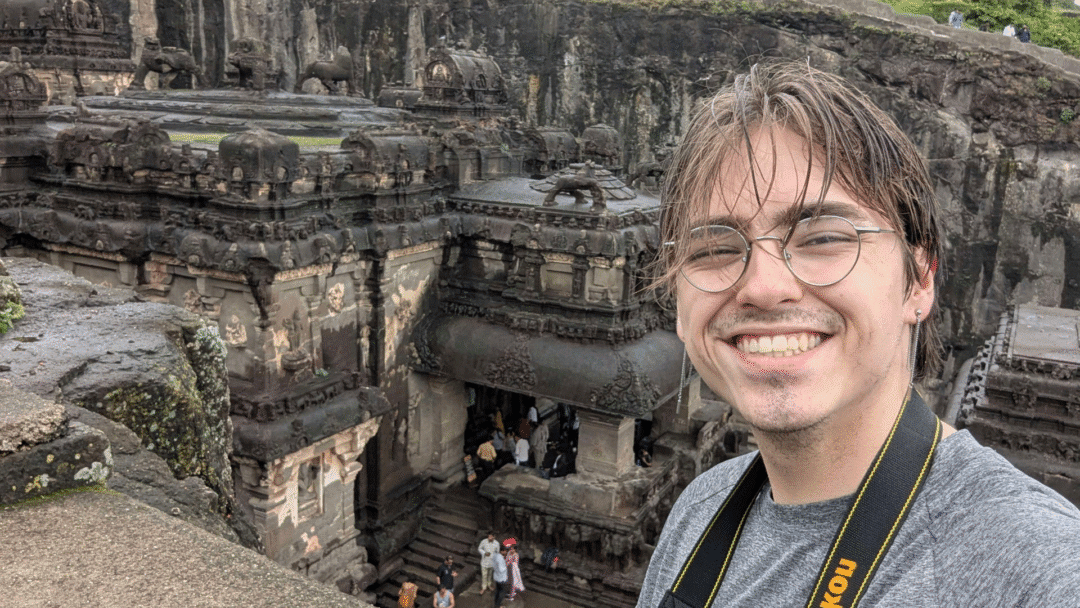
John Weaver ’26 above Cave 16 of Ellora Caves, a UNESCO World Heritage Site in Aurangabad, India.
Mittal Institute: What was most impactful about this experience?
John Weaver: Having the opportunity to dedicate my entire intellectual focus to a language for a full summer was transformative for my language skills and Sanskrit fluency. Further, being able to spend time in the very country I want to research and write about in my work is immensely helpful for ensuring respectful and productive scholarship that is empathetic towards and in tune with the communities I’ll be talking about. I made many friends while in Pune, including an artist who opened his own atelier and a master Carnatic vocalist who works tirelessly to preserve textile traditions in Northeastern India. Between the language course itself, regular trips to see some of the most magnificent sites India has to offer, and the many friends I made while abroad, the real triumph of my experience is the embodied and intuitive knowledge I’ve accrued through cultural immersion. It is only with this kind of subtle, lived experience that scholarship can reach its full potential.
Mittal Institute: Bring us into your daily life during your grant. What was it like?
John Weaver: Every day from Monday to Friday I went to the Deccan College for my Sanskrit courses. There, I studied alongside peers from institutions around the globe in pursuit of a shared goal to deepen our knowledge of Sanskrit and its literature. We translated texts together, quizzed each other on vocabulary, and of course had fun socializing over lunch and tea. Each week I would prepare for and take a test as well as complete lengthy translation projects as homework. We read everything from Kālidāsa’s plays to Bāṇabhaṭṭa’s novel-like prose. I would often walk home from class as I lived within thirty minutes of the college, occasionally stopping at a cafe to study and treat myself to a snack or drink.
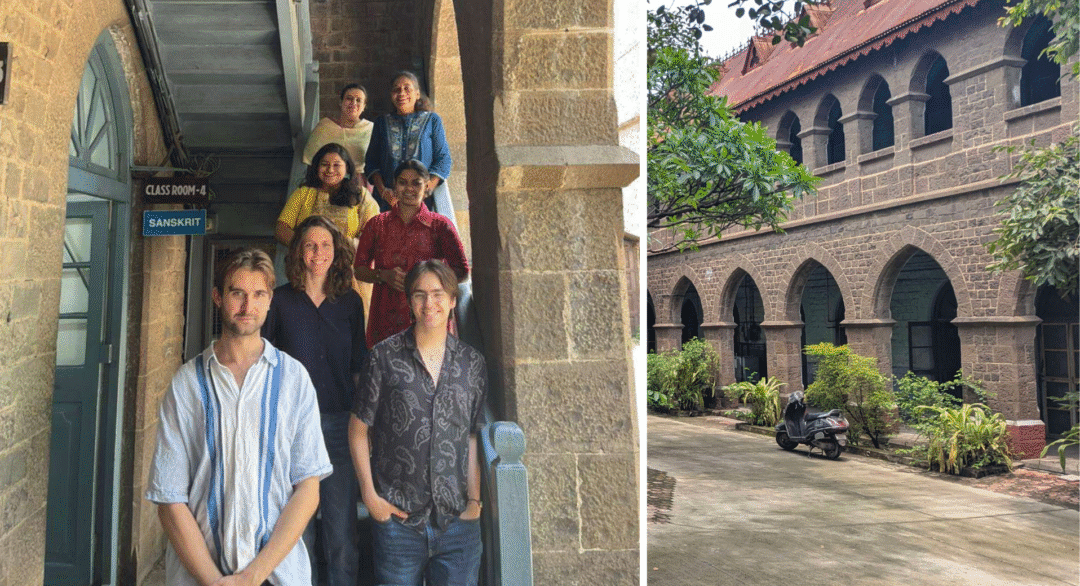
Left image: John Weaver (front right) with his Sanskrit class; Right image: View of Deccan College campus
Mittal Institute: How will this experience help you to reach your academic goals?
John Weaver: Knowledge of Sanskrit is vital to the kind of art historical research that I am interested in – namely, using literature and textual sources as guidelines for interpreting iconographic programs and their symbolism. I hope to produce some of my own translations for my senior thesis to support my art historical inquiries. Further, the immersive and intensive nature of the program offered me a deeper understanding of premodern South Asian intellectual life and how to approach the subject from within. Looking towards the future, this kind of intensive language work will no doubt be a boon as I look to apply for graduate art history programs in the States and abroad as I pursue my ultimate goal of working as a professor in a university setting.
Mittal Institute: What’s the most memorable moment from your time on the student grant?
John Weaver: During our midterm break, I and some of my friends in the program went on an excursion to Ahmedabad to visit Ellora and Ajanta, two of the most resplendent rock-cut cave temple complexes in the Deccan and even India as a whole. Together they represent the breadth of India’s early religious history, featuring magnificent carvings of the Buddha in stupa-halls, Śiva lording over his home atop Kailāsa, and the Jain Tīrthaṅkara Pārśvanātha below his serpentine canopy. It was an incredible experience to explore these sites alongside so many other passionate and diversely specialized budding scholars who could each offer their own insight into the history and culture of the place. We all fed off of each other’s passion and collectively contributed to a deeper understanding of our fields through each other’s expertise. It was a beautiful mix of intellectual collaboration and plain fun, the likes of which can only be born of travel such as this.
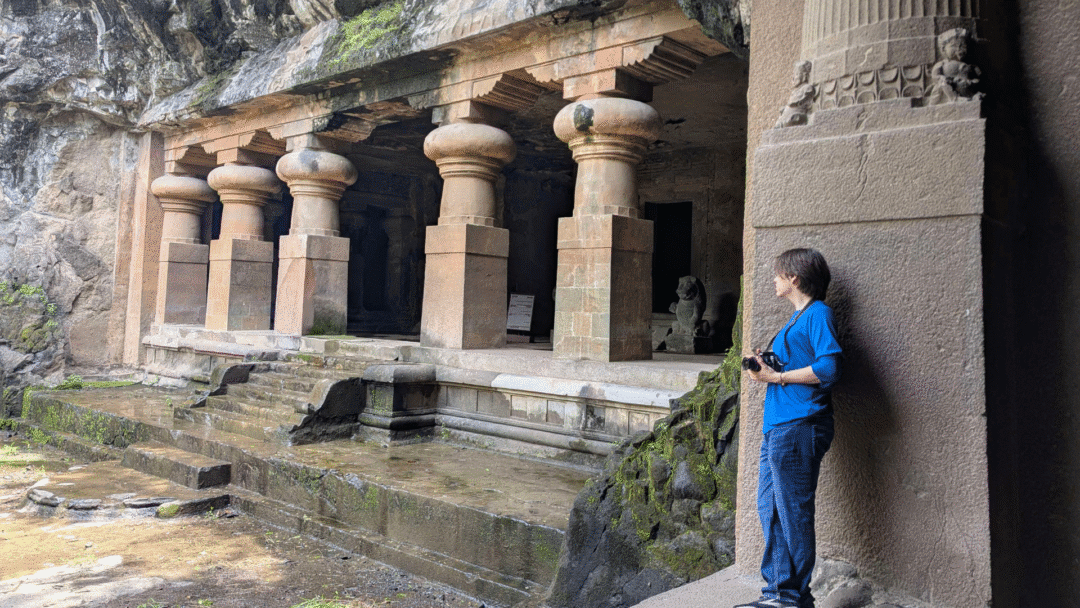
John Weaver explores the Elephanta Caves, a UNESCO World Heritage Site, which are a network of rock-cut temples primarily dedicated to the Hindu god Shiva.
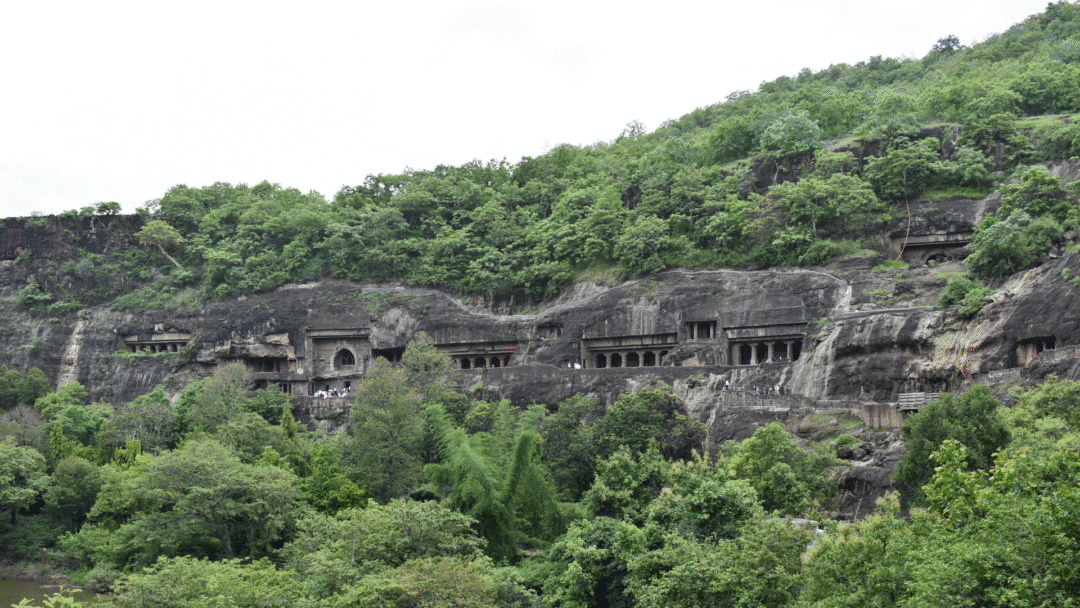
The Ajanta Caves are a collection of 30 rock-cut Buddhist monuments, created between the 2nd century BCE and around 480 CE.
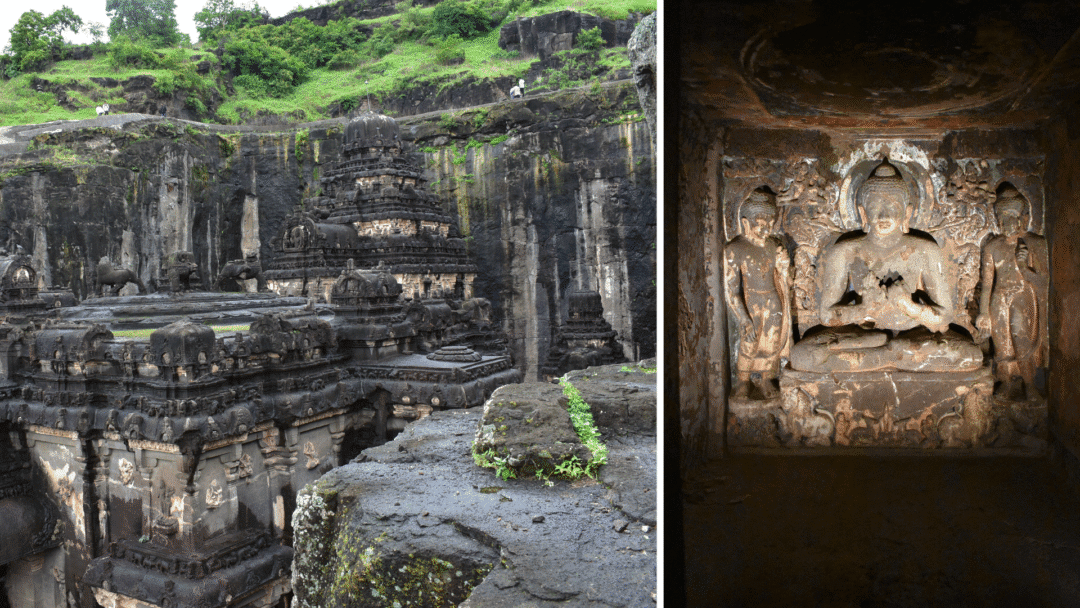
Left: Ellora Cave from above; Right: The Ajanta caves hold records of both the history of Indic Buddhism and the evolution of Buddhist art.
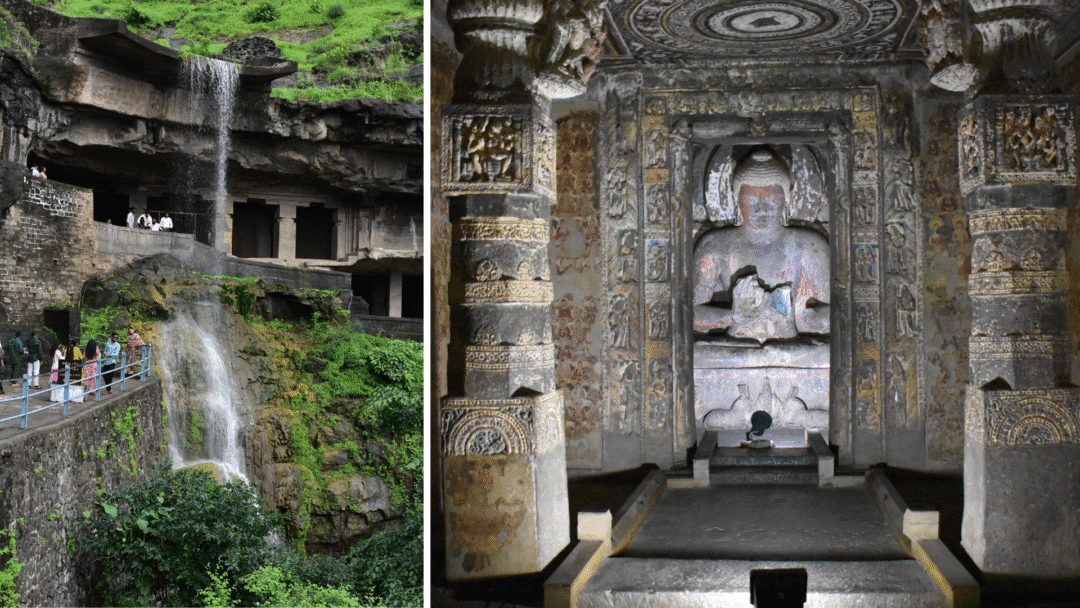
Left: Monsoon rains create water runoff in the Ellora Caves; Right: Intricate paintings and sculptures in the Ajanta Caves.
☆ The views represented herein are those of the interview subjects and do not necessarily reflect the views of the Mittal Institute, its staff, or its Steering Committee.
